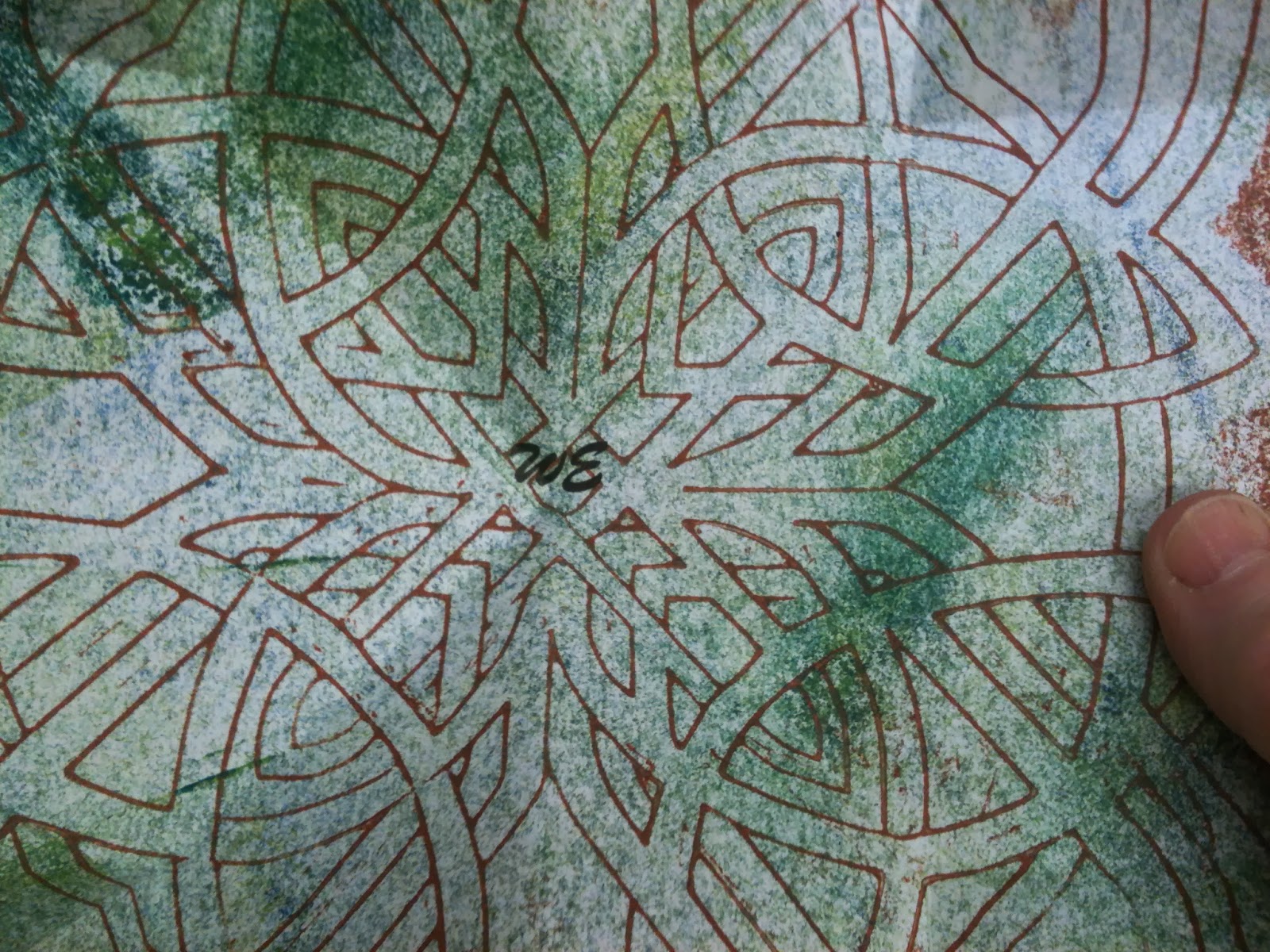This week marks the end of the 2014 Winter Olympics... officially titled the XXII Olympic Winter Games. Held every 4 years (with some exceptions and revisions) since 1924, the Olympics have always symbolized sportsmanship and excellence. The first Olympic games occurred in 776BC on the plains at the base of Mount Olympia in Greece. They continued for twelve centuries until 393 AD when they were banned for being pagan by Emperor Theodosius. Though linked with festivals for the god Zeus.. the games were not really religious; but were to showcase the physical prowess of the competitors and to promote good relations between the cities of Greece. That sense of community through non-violent competition is what marks the Olympics as a sort of gate. The book-of-the-week for week 8 is inspired by this year's Winter Olympics. It is titled Olympic Gate.
 |
| front view: gatefold covers, beads, and maps |
 |
| a tunnel book of gates |
 |
| open the gates... |
Looking down, one can clearly see how the panels fit in place and make up the whole book. The circular arches at the top of each panel are like some figure skater's arms reaching to the heavens. As the first Olympic games were centered around religious festivals, but not rites in themselves.. the archways allude to the godliness of striving for excellence.
 |
| from above... |
 |
| Sochi is south of Tuapse... |
Between the 14th and 19th centuries, the area was controlled by the Abkhaz, Ubykh, and Adyghe tribes. In 1864, with the victory of the Russians over the local tribes in the Caucasian Wars, these peoples were deported... primarily to Turkey... at great hardship. As the Russians settled into the Sochi region throughout the late 1800's, agriculture was the primary source of income... with a considerable effort directed to tea plantations. During the 20th century the area was promoted as a dedicated area for hospitals and sanitariums and eventually become known as a resort area... Now, it is famous for hosting the 2014 Winter Olympic Games.
 |
| ruins of the Loo Temple near Sochi, Russia |
Like the Loo Temple wall, the Olympic Gate, is a combination of many parts. The countries participating in the games are the building blocks...
all the participating countries
|
Though the majority of the competing countries are located in Europe and Asia, there are three countries from the continent of Africa... Morocco, Togo, and Zimbabwe.
There are three countries from the continent of Australia... Australia, New Zealand, and Tonga.
The 18 Asian countries competing are... China, ROC Taiwan, Hong Kong-China, India, Iran, Japan, Kazakhstan, Korea, Kyrgyzstan, Lebanon, Mongolia, Nepal, Pakistan, Philippines, Tajikistan, Thailand, Timor-Leste, and Uzbekistan.
The 15 countries from the Americas are... Argentina, Bermuda, Brazil, Canada, Cayman Islands, Chile, Dominica, Jamaica, Mexico, Paraguay, Peru, USA, Venezuela, Virgin Islands (Brit.), Virgin Islands, (US).
And the 48 countries competing from Europe are... Albania, Andorra, Armenia, Austria, Azerbaijan, Belarus, Belgium, Bosnia/Herzegovina, Bulgaria, Croatia, Cyprus, Czech Republic, Denmark, Estonia, Finland, France, Georgia, Germany, Great Britain, Greece, Hungary, Iceland, Ireland, Israel, Italy, Latvia, Liechtenstein, Lithuania, Luxembourg, Malta, Monaco, Montenegro, Netherlands, Norway, Poland, Portugal, Rep. of Moldova, Romania, Russian Federation, San Marino, Serbia, Slovakia, Slovenia, Spain, Sweden, Switzerland, Former Yugoslavia, Turkey, and Ukraine.
All there... country-by-country... making up the Olympic Gate.
































